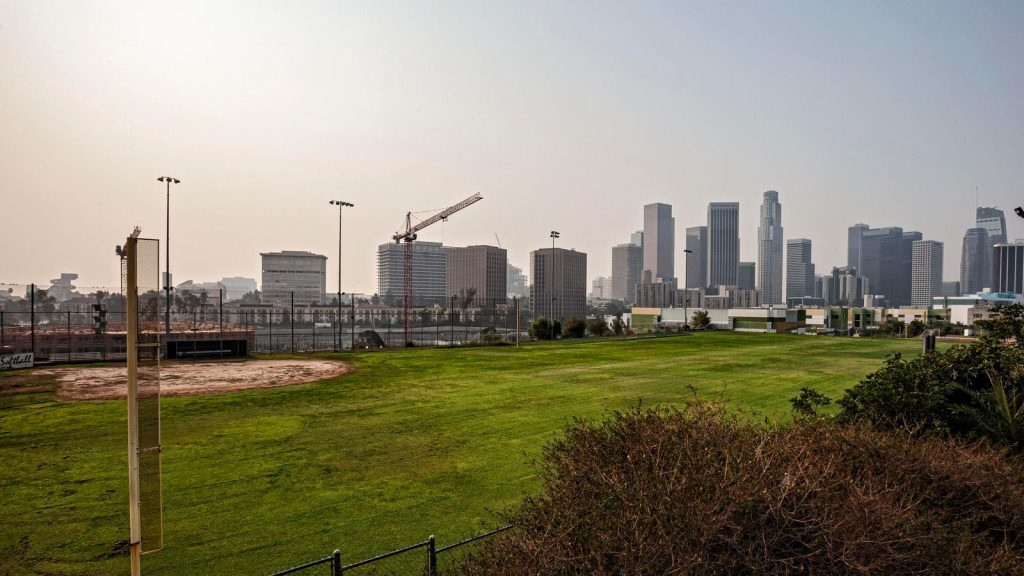I often reflect on my elementary school days in Canton, Georgia. On any given morning, I was mostly concerned about what was on the lunch menu or what games we would play outside at recess. The last thing on my mind was whether my school was in an air pollution “dirty spot.” However, new research using NASA satellite data suggests that your child’s school location may determine how much exposure they have to air pollution and unsurprisingly, certain groups are disproportionately exposed to the “bad air.”
For years, I have conducted research on extreme weather-climate disparities and how communities of color, the elderly, children, and people living below the poverty line are most vulnerable to them. In cities, communities of color are disproportionately concentrated in the “hottest” part of the urban heat island. During hurricanes like Harvey (2017) and Katrina (2005) these same communities took a bigger punch than more resilient or affluent communities. Ongoing work by my colleague Catherine Coleman Flowers and her Center for Rural Enterprise and Environmental Justice (CREEJ) consistently reveals disparities in exposure to septic system failures related to extreme rainfall.
Now, a new study led by Michael Cheeseman of Colorado State University and the National Oceanic and Atmospheric Administration finds a very familiar story related to air pollution. In an essay written by Adam Voiland and featured on the NASA Earth Observatory website, Cheeseman said, “When you look at NASA satellite data across the United States and compare that to socioeconomic data about our schools, the picture is clear: Hispanic, Asian, and Black and African American public school children attend schools with higher concentrations of air pollution than white students, especially in urban areas.” There also seem to be strong correlations for poor communities, irrespective of race. The study was recently published in the journal GeoHealth, and is comprehensive assessment of over 98,000 public schools.
As an example, the maps above show Hispanic public school students and Nitrogen Oxide Concentrations measured by the the Ozone Monitoring Instrument aboard NASA’s Aura satellite. According to the EPA website, “Breathing air with a high concentration of NO2 can irritate airways in the human respiratory system….exposures over short periods can aggravate respiratory diseases, particularly asthma, leading to respiratory symptoms (such as coughing, wheezing or difficulty breathing), hospital admissions and visits to emergency rooms.” Longer exposure can lead to asthma and other serious health outcomes.
Cheeseman said that he was surprised to find such large air pollution differences as a function of race and ethnic groups. For many of us that have done scholarship on environmental or climate justice, it is unfortunately not surprising at all. Robert Bullard, a pioneering authority on environmental justice, has repeatedly warned, “Today, zip code is still the most potent predictor of an individual’s health and well-being. Individuals who physically live on the ‘wrong side of the tracks’ are subjected to elevated environmental health threats and more than their fair share of preventable diseases.”
The NASA Earth Observatory essay affirms Bullard’s point. Adam Voiland writes, “Hispanic, Asian, and Black and African American students are often located in dense urban areas that are frequently exposed to large amounts of vehicle traffic, factories, and other sources of nitrogen dioxide.” Suburban students, which tend to have larger White populations, are exposed to “cleaner” air. There were exceptions, however. Voiland notes, “Many Indigenous students attend school in rural areas with few pollution sources and low concentrations of NO2….significant numbers of Black and African American students attend school in rural communities in the Southeast with low concentrations of air pollution.”
This study was enabled by NASA’s Health and Air Quality Applied Sciences Team (HAQAST). Shobhana Gupta is the associate manager of NASA’s Earth Action Equity & Environmental Justice program and a trained physicion. She told Voiland, “Children have higher respiratory rates and their lungs are still developing, so they are more susceptible to air pollutants.” Such health outcomes can have cascading impacts within communities.
Ok, I know some of you will roll your eyes and say that all people in these pollution hotspots are at risk. I would respond, “Absolutely, there is concern and a need to address this challenge for everyone.” Here’s why the issue is particulary acute for certain communities. Vulnerability is determined by exposure to a hazard, sensitivity to it, and adaptive capacity (the ability to bounce back from it). I have the socio-economic means to relocate if my families is “exposed” to degraded air quality. I also have adequate health insurance, which increases my adaptive capacity and lowers my sensitivity to the hazard. Many of the communities identified in this study may not have the means to be as resilient to bad air quality, heat, or a hurricane.
I recently saw my favorite group, Depeche Mode, in concert. One of their signature hits says, “Try walking in my shoes, you’d stumble in my footsteps.” Before reacting to what I have written, try to move outside of your perspective and walk in the shoes of the families that have a different reality.
Read the full article here










